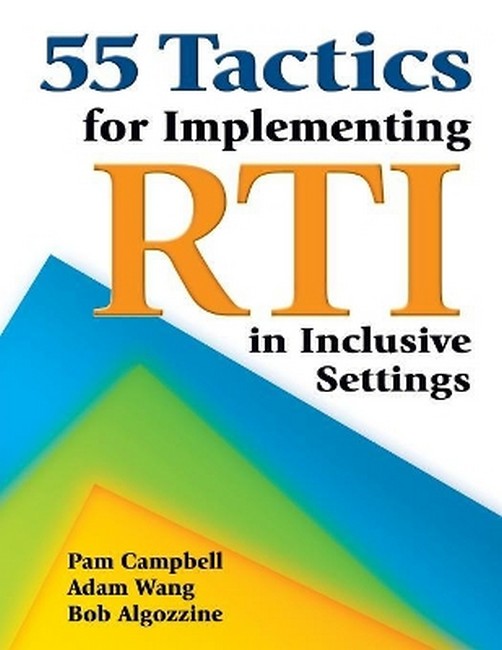Preface Acknowledgments About the Authors Part I. Planning Instruction 1. Decide What to Teach Assess to Identify Gaps in Performance Establish Logical Sequences of Instruction Consider Contextual Variables 2. Decide How to Teach Set Instructional Goals/Establish Performance Standards Choose Instructional Methods and Materials Establish Grouping Structures Pace Instruction Appropriately Monitor Performance and Replan Instruction 3. Communicate Realistic Expectations Teach Goals, Objectives, and Standards Teach Students to Be Active, Involved Learners Teach Students Consequences of Performance Part II. Managing Instruction 4. Prepare for Instruction Set Classroom Rules/Communicate and Teach Classroom Rules Communicate Consequences of Behavior Handle Disruptions Efficiently Teach Students to Manage Their Own Behavior 5. Use Time Productively Establish Routines and Procedures Organize Physical Space Allocate Sufficient Time to Academic Activities 6. Establish Positive Environments Make the Classroom a Pleasant, Friendly Place Accept Individual Differences Establish Supportive, Cooperative Learning Environments Create a Nonthreatening Learning Environment Part III. Delivering Instruction 7. Present Information Gain and Maintain Attention Review Prior Skills or Lessons Provide Organized, Relevant Lessons Show Enthusiasm and Interest Use Rewards Effectively Consider Level and Student Interest Model Thinking Skills Teach Fact-Finding Skills Teach Divergent Thinking Teach Learning Strategies Develop Automaticity Vary Opportunities for Practice/Vary Methods of Practice Monitor Amount of Work Assigned 8. Monitor Presentations Give Immediate, Frequent, Explicit Feedback/Provide Specific Praise and Encouragement Model Correct Performance Provide Prompts and Cues Check Student Understanding Monitor Performance Regularly/Monitor Performance During Practice Use Peers to Improve Instruction Provide Opportunities for Success/Limit Opportunities for Failure Monitor Engagement Rates 9. Adjust Presentations Adapt Lessons to Meet Student Needs Provide Varied Instructional Options Alter Pace Part IV. Evaluating Instruction 10. Monitor Student Understanding Check Understanding of Directions Check Procedural Understanding Monitor Student Success Rate 11. Monitor Engaged Time Check Student Participation/Teach Students to Monitor Their Own Participation 12. Keep Records of Student Progress Teach Students to Chart Their Own Progress Regularly Inform Students of Performance Maintain Records of Student Performance 13. Use Data to Make Decisions Use Student Progress to Make Teaching Decisions Use Data to Decide If More Services Are Warranted/Use Student Progress to Decide When to Discontinue Services Appendix A: RTI Accommodations/Modifications Checklist Appendix B: RTI Accommodations/Modifications Worksheet Appendix C: Documentation of RTI Accomodations/Modifications References Additional Readings Selected Internet Resources: RTI Accomodations/Modifications Index
As students with disabilities and learning differences are included in general education settings in greater numbers, educators need easy and simple access to authentic information about effective teaching. This resource provides all teachers, regardless of level, experience, or area of specialization, with effective instructional strategies for students with/without disabilities and across grade levels and content areas. Drawing from evidenced-based models of instruction, 55 Tactics for Teaching Diverse Learners in Inclusive Settings is organized around four components of instruction-planning, managing, delivering, and evaluating-and allows teachers to respond to instructional diversity by using classroom-tested tactics backed by relevant research. Readers will also find: - A reproducible checklist of accommodations/modifications - A worksheet for planning and implementing accommodations/modifications - References and additional readings - A list of selected Internet resources for accommodations/modifications This is the third volume of a collection of practices for use at the elementary level, at the secondary level, and practices designed specifically for teaching students with disabilities. Also see: 63 Tactics for Teaching Diverse Learners, Grades 6-12 63 Tactics for Teaching Diverse Learners, K-6
Pam Campbell is an associate professor in the Department of Special Education at the University of Nevada, Las Vegas. During her 35 years as an educator, she has taught university courses in instruction, assessment, curriculum, and classroom management for both general and special educators. In addition, she has been a public school teacher in general education, Chapter I, and special education classrooms. She served in the dual role of university professor and coordinator of seven professional development schools (PDS) at the University of Connecticut and currently serves at UNLV as coordinator of the Paradise PDS. Her research interests focus on linking the preparation of teacher candidates and sustained professional development of practicing teachers through technology. Her work has been published in TEACHING Exceptional Children, Remedial and Special Education, Record in Educational Leadership, the Professional Educator, and the Council for Administrators of Special Education. She is also the coauthor of Improving Social Competence: Techniques for Elementary Teachers. She has served the field of special education through numerous local, state, regional, and national presentations and as field reviewer for Exceptional Children, the Journal of Special Education Technology, TEACHING Exceptional Children, and Teacher Education and Special Education. She earned her PhD at the University of Florida. Jianjun (Adam) Wang is senior instructional technology specialist at Williams College. He has been responsible for collaborating in the design and development of STRIDE. He has also been instrumental in the implementation of STRIDE in the preparation of future teachers, as well as the ongoing professional development of practicing educators. He has served as an instructor in technology courses and made several regional, national, and international conference presentations related to the effective implementation of technology in education. His research interests concern how educational technology can enhance human learning and focus on developing Web-based learning and teaching tools to enhance the undergraduate learning experience. He earned his MA from the University of Connecticut. Bob Algozzine is a professor in the Department of Educational Leadership at the University of North Carolina and project codirector of the U.S. Department of Education-supported Behavior and Reading Improvement Center. With 25 years of research experience and extensive firsthand knowledge of teaching students classified as seriously emotionally disturbed, Algozzine is a uniquely qualified staff developer, conference speaker, and teacher of behavior management and effective teaching courses. He is active in special education practice as a partner and collaborator with professionals in the Charlotte-Mecklenburg schools in North Carolina and as an editor of several journals focused on special education. Algozzine has written more than 250 manuscripts on special education topics, including many books and textbooks on how to manage emotional and social behavior problems.

